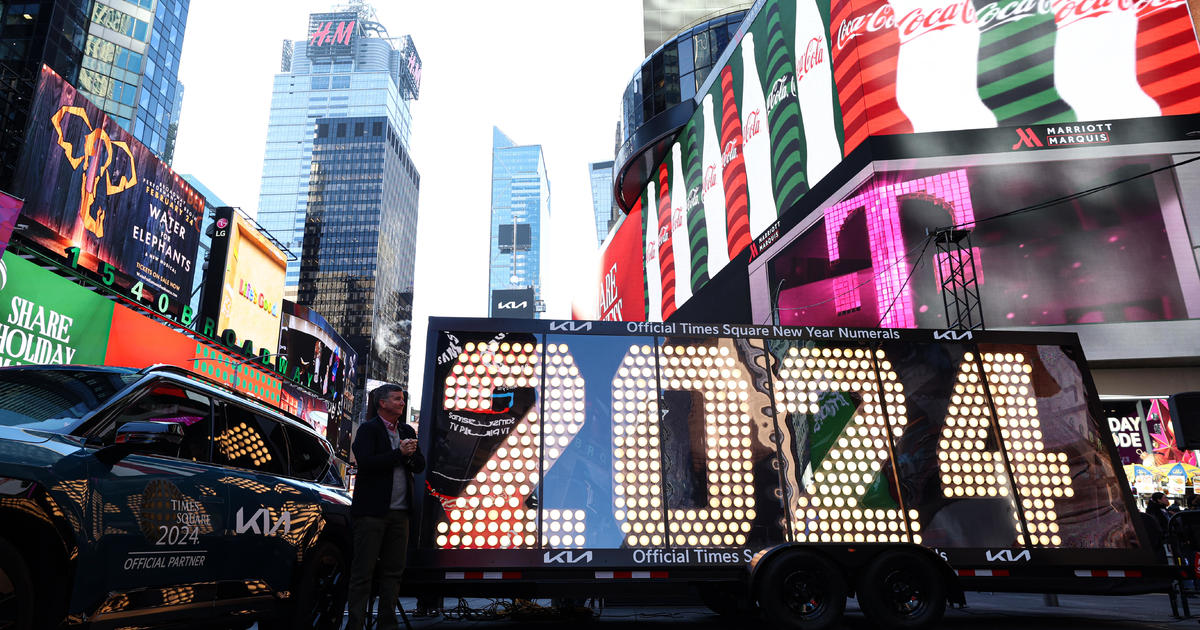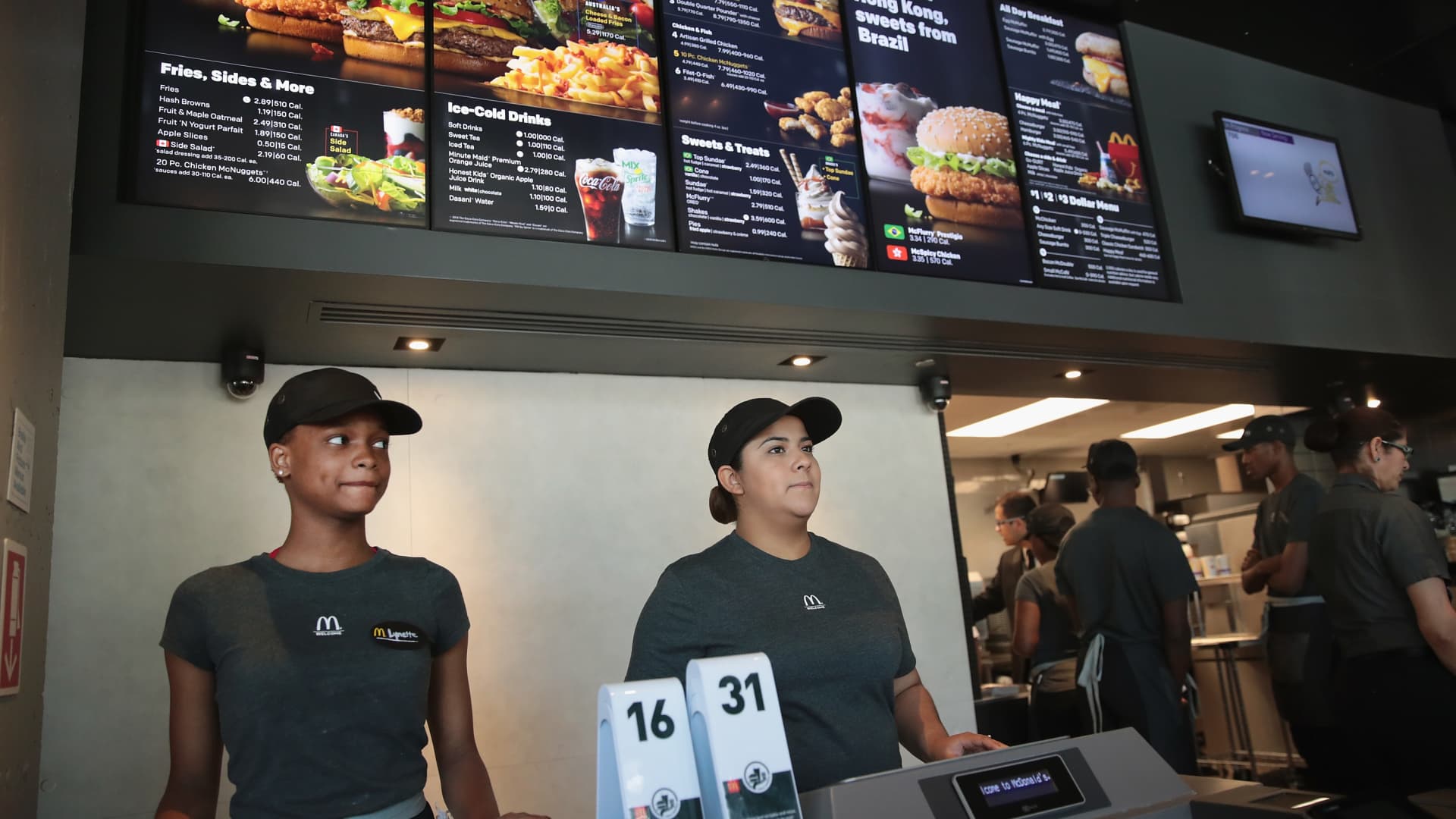WASHINGTON (AP) — There’s been no shortage of tough news for China’s economy as some of the world’s biggest brands consider or take action to shift manufacturing to friendlier shores at a time of unease about security controls, protectionism and wobbly relations between Beijing and Washington.
Count Adidas, Apple and Samsung among those looking elsewhere.
But as a tumultuous 2023 for the Chinese economy comes to a close, there has been at least one bright spot for Beijing when it comes to foreign investment: American fast-food chains have decided a market of 1.4 billion people is simply too delicious to pass up.
KFC China’s parent company opened its 10,000th restaurant in China this month and aims to have stores within reach of half of China’s population by 2026. McDonald’s is planning to open 3,500 new stores in China over the next four years. And Starbucks invested $220 million in a manufacturing and distribution facility in eastern China, its biggest project outside the U.S.
This is surely not what Chinese President Xi Jinping had in mind as he made the case to American CEOs about the upside of China’s “super-large market” last month while he was in San Francisco for a summit of world leaders. The investments in fast food and other consumer goods, while Washington is curbing exports of computer chips and other advanced technology, don’t fit into China’s own blueprint for modernizing its economy.
“As you try to interpret the signals from McDonald’s and Starbucks” and other chains, says Phil Levy, chief economist at the supply chain management firm Flexport, “note what the industries are: These are not high-tech burgers.’’
And while some U.S. companies are increasing investments in the world’s second-largest economy, overall foreign investment began falling this year. In the July-September quarter, net foreign direct investment in China sank to a deficit of $11.8 billion, the first quarterly deficit since Beijing began publishing the data in 1998.
As tensions simmer between China and its Western trading partners, many multinational companies are shifting investments to other places, such as Southeast Asia or India, or repatriating their earnings. That has sapped China of a key engine when its economy has yet to fully recover from the disruptions of the pandemic and a property industry crisis that has been a drag on growth.
Beijing puts some of the blame on U.S. government policies.
Commerce Ministry spokesperson Shu Jueting said recently, “The U.S. side has repeatedly politicized economic, trade and technology issues and overstretched the concept of security, abused export control measures, and restricted trade and investment in China by its own enterprises, which is forcing enterprises to give up opportunities in the Chinese market and opportunities for win-win cooperation.”
A survey released in September by the U.S.-China Business Council, which represents American companies in China, suggested that the uncertainty has taken a toll: 43% of its members said China’s business environment had deteriorated in the past year, and 83% said they were less optimistic about China than they had been three years ago. Twenty-one percent said they were investing fewer resources in China, versus just 10% who were investing more.
Surveys of European and Japanese companies have shown similar results.
While China’s market is gigantic, it’s ailing. Unemployment among young Chinese rose to over 20% by June, the last time the government released that data. Housing prices are falling and the stock market is down nearly 15% since the summer. That’s left many Chinese feeling nervous about spending.
Still, bullishness for China as other industries try to de-risk and detangle from Beijing may be a profit-increasing strategy for the fast-food industry.
“We believe there is no better time to simplify our structure, given the tremendous opportunity to capture increased demand and further benefit from our fastest-growing market’s long-term potential,” McDonald’s CEO Chris Kempczinski said as the Chicago-based company announced in November it was increasing its minority 20% ownership of its McDonald’s licensed stores in China, Macau and Hong Kong to 48%.
Burgers and lattes don’t raise the sorts of friction that more high-tech industries have in the complicated U.S.-China relationship. Those strains have persisted under the presidency of Joe Biden, who took office vowing to do more to counter China’s expanding military clout and its menacing of neighbors, to improve the country’s treatment of Uyghur and other ethnic minorities, and to crack down on intellectual property theft.
Relations hit a low point in February when Biden ordered a Chinese spy balloon that traversed the continental United States to be shot down. Beijing, which claims self-governed Taiwan as its own territory, also protested a stopover in the U.S. by the island’s president, Tsai Ing-wen, earlier this year. China answered fresh U.S. controls on exports of advanced computer chips and the technology to make them with limits of its own on exports of vital commodities like graphite, gallium and germanium, all metals used in making semiconductors, solar panels, missiles and radar.
The relationship appears to be stabilizing somewhat as 2023 winds down, highlighted by last month’s Biden and Xi meeting outside San Francisco. But since then, Biden’s top advisers have said there are no plans to shift the strategy of tightening regulations and blocking U.S.-based high-tech investments in China, citing the need to safeguard national security.
Both former President Donald Trump, the 2024 GOP presidential front-runner, and Biden have worried about depending on China, a potential adversary, for supplies of critical materials used in many high-tech products. Both have sought to reduce America’s reliance on Chinese factories and have encouraged companies to shift away from China to other countries — so-called “friend-shoring.”
Still, Biden administration officials have said they don’t want to see a total decoupling of the world’s two biggest economies.
“De-risking, yes. Decoupling, no,” Nicholas Burns, the U.S. ambassador to China, said at a recent event in Washington. “We want to continue a major trade and investment relationship with China, just not ... in the realm that might help them leapfrog over us sometime in the next 10 years in military technology.”
Rosemary Coates, executive director of the nonprofit Reshoring Institute, noted that decisions to expand or retrench are relatively easy for a company like McDonald’s or its fast-food rivals.
Franchises “can be opened or closed,” Coates said. “It’s not like you’re investing in an auto plant or some kind of machine shop.”
China’s vast market is vital for many foreign companies: At their annual investors day gathering this month, McDonald’s executives noted that 70 million of the 150 million customers active in its customer loyalty program are in China.
KFC China says growth in its new outlets has averaged more than 22% over the last five years, and it plans to open 1,200 additional stores in the next three years. The chain Popeyes Louisiana Kitchen relaunched its brand in China in August with a flagship restaurant in Shanghai and plans to open 1,700 stores over the next 10 years.
But for all the promise of China’s huge market, U.S. businesses have other reasons to think twice about expanding in China.
In July, the U.S. recommended Americans reconsider traveling to China because of arbitrary law enforcement and exit bans and the risk of wrongful detentions. Commerce Secretary Gina Raimondo has warned Chinese leaders that U.S. businesses might stop investing in their country if they do not address complaints about worsening conditions due to raids on firms, unexplained fines and unpredictable official behavior.
While insisting that China is keen to have foreign investment, Beijing has given no indication it might change trade, market access and other policies that irk Washington and its other trading partners.
“Where do you draw the line?’’ asked Levy, a former White House economic adviser in George W. Bush’s administration. “Someone might say: For sourcing sensitive computer chips, this has to be done in a place I really trust. … The other extreme is: We’re OK selling them lattes and burgers. But where do you draw the line for the stuff in between — say, automotive parts? What about ball bearings?’’
___
Kurtenbach reported from Bangkok. AP writer Ken Moritsugu contributed to this report from Beijing.
Adblock test (Why?)
US investment concerns in China are rising. Except for fast food - The Associated Press
Read More
















